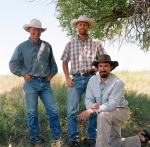The first time I thought I ought to get involved in conservation was on a hike up to Meeks Lake on Boulder Mountain in southern Utah years ago. Meeks is a should-be shining jewel of a pristine mountain lake, but in the summer it is treated like a stock yard. There was cow shit everywhere, cows in the water, the grass was hammered and the place stank. Ed Abbey called it “cow burnt.” In fact, fire might be better for the land than over grazing. I noticed that the livestock gates were open all the way up the mountain, the grass was gone everywhere, and when I got home I wrote the Forest Service. They said, “Oops, sorry about that, thanks for writing.” It is still like that years later and I have learned to my dismay that, indeed, livestock rules – and ranchers break the rules with impunity. What’s up with that? Here’s a lively conversation amongst the residents around Sun Valley, Idaho who have a similar experience. . . . .more>>
Like this:
Like Loading...








